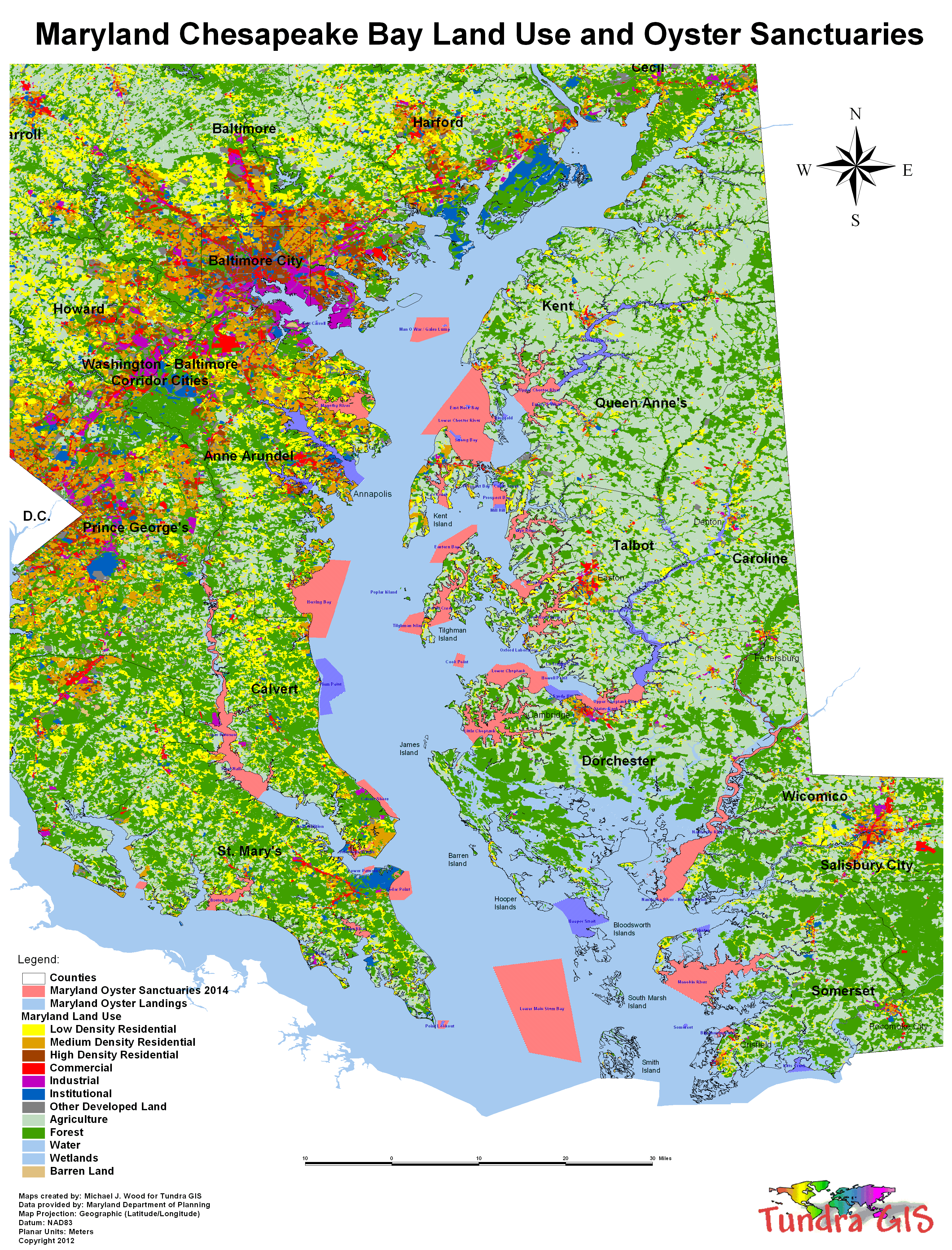 |
|
|
|
|
| Map Gallery Slide Show | Image 29 of 75 | MD Oyster Sanctuaries & Land Use |
 |
||
| Oyster Sanctuary & Land Use | ||
Oyster Sanctuaries Following recommendations put forth in the Oyster Advisory Commission's 2008 Legislative Report and a comprehensive Federal/State Programmatic Environmental Impact Statement for Oyster Restoration in Chesapeake Bay completed in June 2009, The governor announced Maryland's Oyster Restoration and Aquaculture Development Plan in December of 2009. One objective of this plan was to expand the oyster sanctuary network from 9% to 25% (~9,000 acres) of remaining oyster bar habitat over a broad geographical distribution. Within this enlarged sanctuary network, a number of large areas were selected (up to entire river systems) in strategically located areas for targeted restoration. Prior to 2009, Maryland's oyster sanctuaries covered only 1,475 acres of bottom habitat. Individually, the sanctuaries were sparsely distributed and small making them difficult to enforce against illegal poaching and relatively ineffective as restoration tools. In 2009, the Department added three new oyster sanctuaries that more than doubled the percentage of protected area yet still protected only 2,581 acres (9%) of geographically dispersed oyster habitat. The remainder of Maryland's portion of the Bay, exclusive of private lease areas, was left open to public shellfish harvesting. The newest sanctuary areas established in September 2010 were specifically targeted to: Facilitate development of natural disease resistance – the long-term strategy for restoring oysters; Protect about half of the Bay's most productive oyster grounds ("best bars") as determined by an analysis of Fall Survey data compiled from 1996 to 2007 (see more detail in FAQ section); Have high restoration potential based on water quality and other factors; Provide essential natural ecological functions that can not be obtained on a harvest bar; Serve as reservoirs of reproductive capacity, generating larvae to populate other areas, including public shellfish fishery areas; Provide a broad geographic distribution across all salinity zones; Increase our ability to protect these important areas from poaching. It is anticipated that both recreational and commercial fishing will benefit from improved oyster bar habitat in sanctuaries because oyster bar habitat provides critical habitat to blue crabs, striped bass, white perch and other important finfish species. Oysters within sanctuaries are also expected to increase the abundance of adult oysters whose larvae are expected to settle not only within the sanctuary, but also on public shellfish fishery areas in the vicinity of the sanctuaries. Here is a complete list of Maryland's current oyster sanctuaries, listed by region and inclusive of coordinates, and as shown on the map above. |
||
| CLICK HERE TO DOWNLOAD | ||
| < back | up ^ | next > |